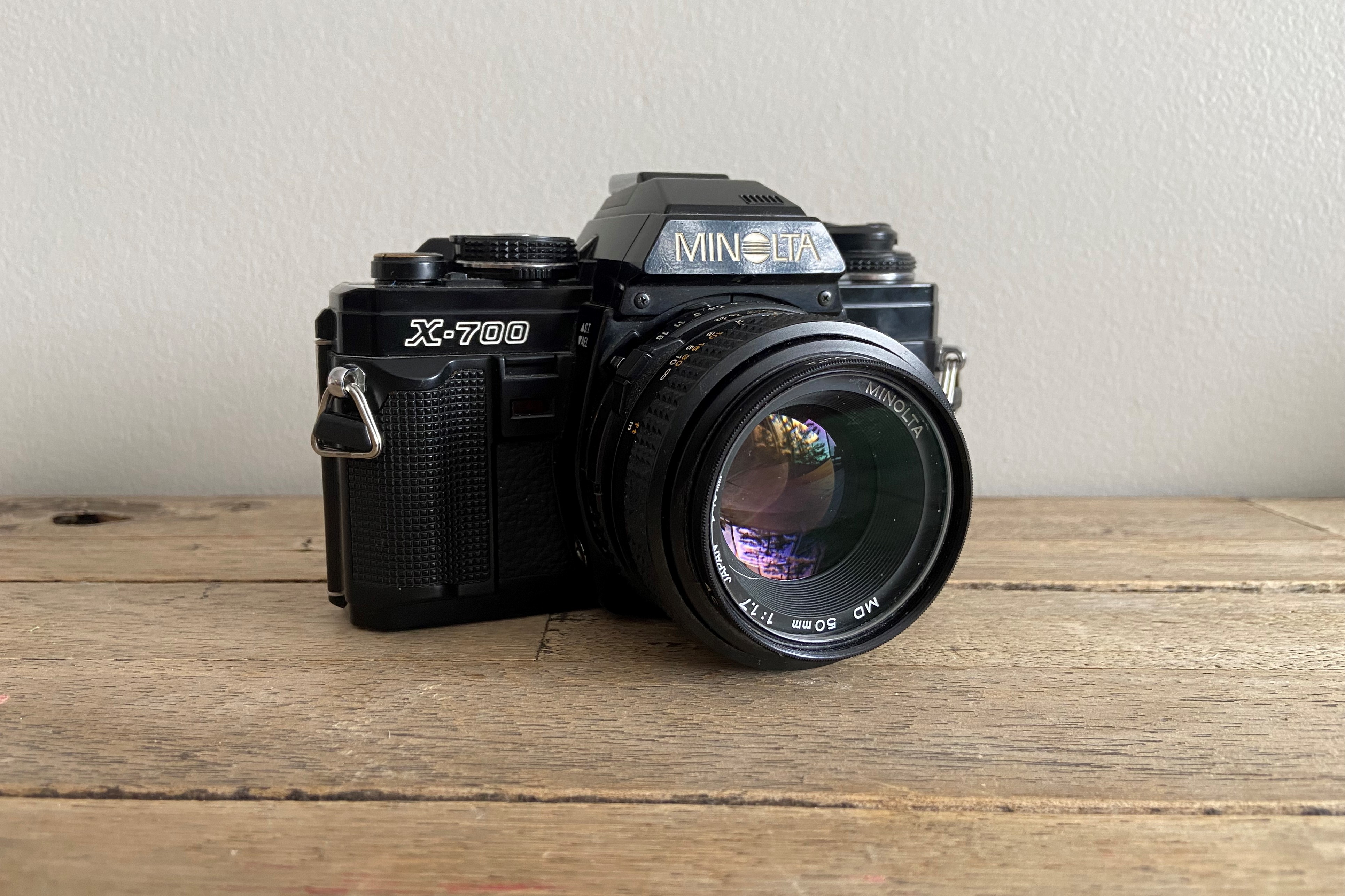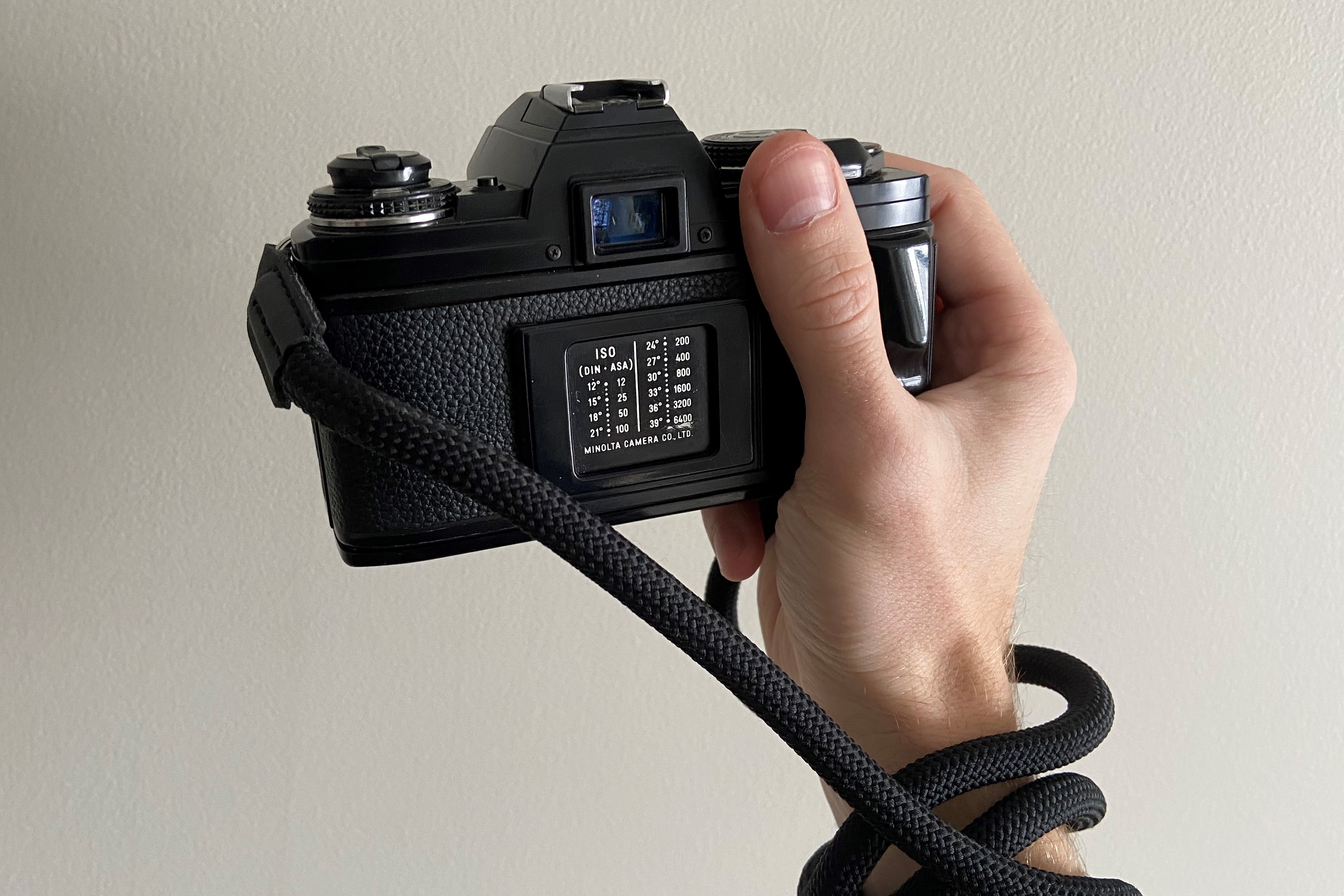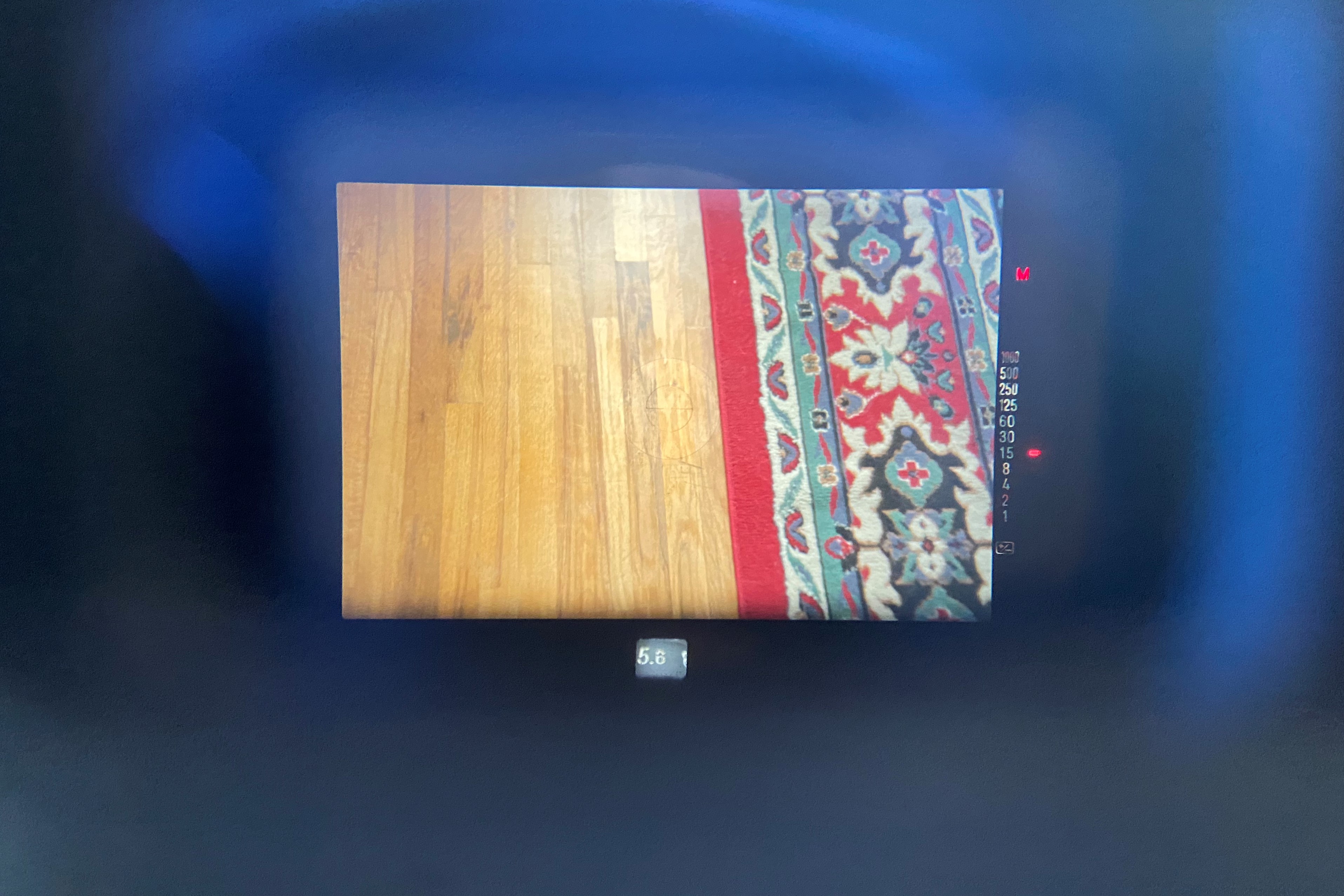MINOLTA X-700: A DIFFERENT SLR JOINS THE RANKS
JANUARY 6 2023
The Minolta X-700 was a strange camera for me. There was a period of four weeks where I felt like all I heard about was how good Minolta was, how perfect the X-700 is and how amazing the glass is. Naturally I had to try it for myself, but the weird thing was that right after I acquired my own copy of the camera it felt like all the praise and hype for it stopped and all I started hearing about was the capacitators. Maybe I was less interested in how good it was since I finally had my own, but I did find it interesting how quickly the “background chatter” surrounding this camera changed for me before and after purchasing it.
So is it a good camera though? The answer is a resounding yes from me. Even though I’m constantly worried about it’s electronics dying on me I absolutely adore the camera and they’re not lying about the Minolta lenses, they are truly incredible.

I want to do a fairly thorough review on the X-700 because it is one of my all-time favorite cameras and it is my go-to film camera recommendation when people ask me. So I ought to have some good reasoning for liking the camera so much.

BUILD
We’ll start with the first thing you notice on this camera. It’s build quality, there’s no hiding that the camera is plastic, it doesn’t feel as durable as some of my other metal cameras but I’m a BIG fan of the build quality. I’m not a fan of the plastic, but it is well designed, decently light, and looks pretty cool. Additionally, Minolta got it right by making a built-in thumb grip. If you’re a fan of keeping the camera in hand while shooting then you will appreciate the thumb grip as well. I wish that so many more of my cameras had one.

And onto the looks, I think the camera looks excellent, especially with a black cord strap. The camera is primarily black and has sharp angles that remind me of 80s retro futuristic design, which makes sense since the camera was released in 1981. It isn’t as classically beautiful as say chrome Olympus OM-1, but it is an attractive camera in a sleek and modern way. And I’m not much of a designer but I understand that form following function is sort of an important concept, and with this camera it 100% does. The X-700 is the perfect size, the dials are in the perfect place, and it feels so intuitive to use. Trust me, I didn’t think I would like it as much as I did until I picked it up and it fit into my hand perfectly. It’s almost the quintessential camera that disappears into your hand while you use it, almost though, because I do have some tiny complaints, but we'll get to that later.

FEATURES
I don't want to spend to much time on this section because obsessing about technicalities isn't my favorite, but It's worth dedicating at least a paragraph to talk about the X-700s feature since I think they are some of the cameras greatest strenghts.
What you will notice in the photo above is that the camera has a 3 modes, a manual mode where you can set the shutter speed yourself, an A (aperture priority) and P (program) mode. I primarily use the camera in the manual mode, however, the automatic (A and P) modes are excellent. When I want to shoot faster I will switch to these modes and I've found that the internal meter does a very good and unbiased job measuring the scene and assigning the correct shutter speed and/or aperture. More often than not I'm very happy with the performance of the automatic modes and having the option to use them is fantastic. This is one of the main reasons that I recommend the X-700 to anyone that is brand new to film photography beacuse you can begin to ease yourself into manualy controlling the settings with the A and manual modes but you will always have the P mode if that is what you're comfortable with.

IMAGE QUALITY
Okay, so now onto one of the more important points in a camera review, image quality. For SLRs image quality really comes down to the lenses that the camera body can use. The body itself is mostly just a black box with a lens mount and different designs and shapes that may make some better or worse for you. I love the design of the Minolta X-700 but what really matters is the lenses it can use and the images they can produce. I haven’t used all the lenses available to the X-700, and I haven’t used all of the lenses in existence for this to be a true comparison. But of the two lenses that I own, the Minolta MD 50mm f1.7 and 28mm f2.8, I can say that the image quality is fantastic.


Just about every time I use this camera I am blown away by how sharp, colorful, and stunning the images are. It’s hard for me to say this because deep down I’m a Nikon fanboy, but the 28mm and 50mm Minolta lenses are leagues ahead of their Nikkor counterparts. And probably some people would not agree with that statement, which I’m kind of expecting though because photography and gear is all personal preference and for me the Minolta glass is the reason that I will always have at least one MD mount body in my collection.
At this point you might be asking why I don’t only use the X-700, and well, I can’t really answer that… I guess I just love all my cameras differently, but I will say that every time I use the X-700 I do say that I should start using it more.

SOME NOTES/ CONCERNS
So, I absolutely love my X-700. There was a period of a few months where it was the only camera I used; it seriously delivers every time. However, there are a few things with the X-700 that prevent it from being my perfect camera. To start the X-700 relies on batteries, depending on who you ask, a camera that uses batteries isn’t necessarily bad. But I am firmly in the “mechanical superiority” camp of analog cameras, so in my tier list of cameras, the X-700 can never beat my FM2 simply because it depends on batteries and electronic components. This is a very doomsday-esque outlook on cameras, and honestly I haven’t had one of my electric cameras die on me yet… knock on wood, but it is still a discomforting feeling thinking that the wellbeing of 40+ year old electronics are the only thing keeping the camera alive.
And more specifically to the X-700 it was designed with two critical capacitators that are known to fail seemingly randomly. A capacitator failure renders the camera useless unless it is replaced, so every time I take the camera out, I worry that I’m pushing it ever so slightly towards a capacitator induced demise. This is the reason that for the last 6 or so months it has been sitting on my shelf… I love the camera dearly and I never want it to break, but the fear of breaking it prevents me from using it.
This grey area of owning an X-700 is definitely one of the things that I don’t like about it.

The other thing that I don’t like about the camera is much more nitpicky and less serious then potentially faulty electronics. I don’t like how you can’t see the shutter speed that you are on in the viewfinder.
In the viewfinder you are only shown your aperture and the suggested shutter speed. This is great for program and aperture priority modes, but it makes it difficult to shoot quickly in the manual mode since you will not know the selected shutter speed unless you have the shutter dial positioning memorized or take the time to look out of the viewfinder to check the shutter speed setting. I will note that there is a little tab on the shutter speed dial so it is possible to know what shutter speed you are on based on feel, but it is far less simple than having a shutter speed readout in the viewfinder.
In all practicality though, this doesn’t impact shooting experience at all, it is just me complaining. And the electronics issue is just a background complaint that shouldn’t get in the way using and enjoying the camera.

THE END OF THE REVIEW
With all that said the Minolta X-700 is one of my all-time favorite cameras and it is my go to camera recommendation for anyone that is interested in getting into film photography. For all intents and purposes the camera is perfect, it is beautifully designed, has incredible lenses, intuitive and fun to use and has a slew of features that would be helpful for every shooter. I know that I only really scratched the surface of this camera, but if you found this post I hope it is helpful to you, and please give little weight to my complaining, this camera is truly amazing and my “negative observations” shouldn’t get in the way of anyone enjoying this truly beautiful camera.